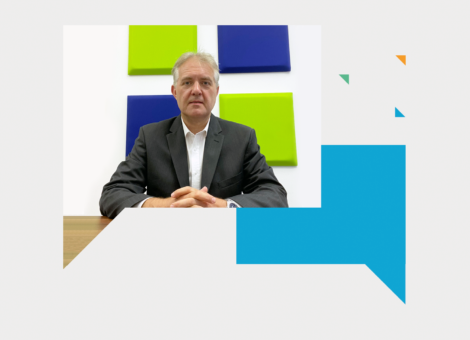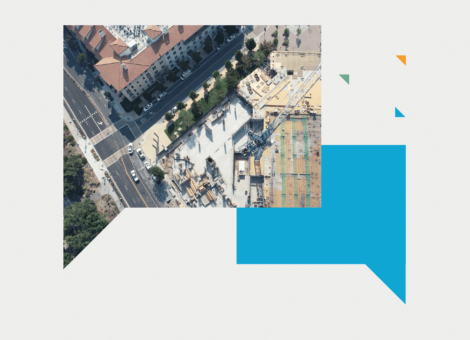Meet the Kalibrate team: Miguel Neves, Project Manager
At Kalibrate, we believe our success is driven as much by our people as our technology. So, as part of our new meet the team series, we’re showcasing some of the talent and expertise within the Kalibrate family. This installment features Miguel Neves, Project Manager for Kalibrate Pricing.
——————————-
What is your role at Kalibrate?
In my role as a Project Manager for Kalibrate Pricing, I oversee various types of IT and software implementation projects for Kalibrate clients. The size of the projects can vary from onboarding first-time clients to Kalibrate’s fuel pricing software, to large-scale rollouts across clients’ multi-country infra-structure.
My priority as a Project Manager is to keep Kalibrate’s teams communicating and progressing through the agreed work. I facilitate this by removing blockers for us to reach the goal — delivering client projects successfully.
What does a typical day look like?
My typical day is packed! I work directly with clients and across multiple teams within Kalibrate. One of my favorite things about my job is working with a diverse group of people.
I start my day by liaising with client executives or operational teams in virtual morning stand-up meetings, then co-ordinate any actions with Kalibrate’s internal development or operations teams. Once these plans are reviewed and in progress, I reserve afternoons for client training or testing sessions. At the end of each day, I review support items or contribute to our product development roadmap.
In the middle of all this, there’s a little time set aside to review the latest industry news and global fuel market trends, and hopefully grab a cup of tea and catch up with my colleagues.
What do you love about your role?
I love being challenged by my work. Every project I programme is different and has multiple demands, so as a team we’re learning and improving all the time. Sometimes there are technological challenges with system integrations and it’s incredibly rewarding to see our teams bring together their own innovation and expertise to create a solution for the client.
I encourage workshops at the beginning of projects to help me create a collaborative environment with the client. With a solid know-how of client processes, our team can own the expertise to deploy the pricing software effectively.
It’s a great moment when — after a few steps into their project — clients have a “lightbulb moment” and see how Kalibrate Pricing will materialize, integrate with their existing systems, and optimize their pricing efficiency — making a positive difference to the way they’ll operate.
Why did you choose to join Kalibrate?
I initially joined Kalibrate in a business analysis role. As a growing organization at the forefront of fuel data, Kalibrate had reporting needs, and analytics was one of my strengths.
Before joining the company, I worked for a global media group, but had a desire to progress my career into a more technical role. As a Project Manager I’ve really been able to combine those business and technical skills by becoming more involved in IT.
What do you think are the greatest challenges and opportunities in the fuel pricing sector?
Organizations are moving to more flexible cloud infra-structures to have greater control over operational costs. This creates a need for real-time analysis of the data generated by the system — both a benefit and a challenge.
Now pricing data is readily available 24/7: from the office, in the station, and via mobile phone to area managers in the field. It becomes a priority to quickly review market movements and set the appropriate response to meet strategic goals.
My clients regularly ask me how to use this centralized data, and make sense of all that is available. How can advanced scientific methodologies be applied to their data to give direction to decision-making?
Kalibrate has the right tools to help with this challenge, allowing clients to set new ways of working, reduce manual analysis, and maximize profit.
Where do you see the fuel and convenience retail markets heading?
For many businesses, their internal focus is on:
- Managing operational costs to invest in new forecourt infra-structure
- Cloud-based tools for global accessibility and growth
- Intelligent tools that assist strategies for pandemic market recovery
These functional changes are then utilized externally to provide services that are truly valued by consumers. For example, better forecourt infra-structure and technology may help a retailer adapt their offer to EV consumers. It could also make it easier to quickly implement a system for contactless payment or mobile ordering for curb-side pick-up.
Technology-wise, integration with car systems and mobile technology offerings are already a reality, accelerated by the COVID-19 pandemic. We’ll expect to see these grow over the next few years.
——————————-
Learn about the benefits of automating your fuel pricing process in this blog: “How much is your fuel pricing costing you?”
Read more articles about:
Fuel pricingSubscribe and get the latest updates
You may unsubscribe from our mailing list at any time. To understand how and why we process your data, please see our Privacy & Cookies Policy
Related posts
Fuel pricing
Fuel futures: Price optimization
Optimal pricing is crucial to ongoing success in fuel retail, because it’s what enables you to drive volume, stay...

Meet the Kalibrate team
Meet the Kalibrate team: Niels Skov, Chief Commercial Officer
"I get to collaborate across every corner of the organization, and I enjoy that tremendously. There are very few...

